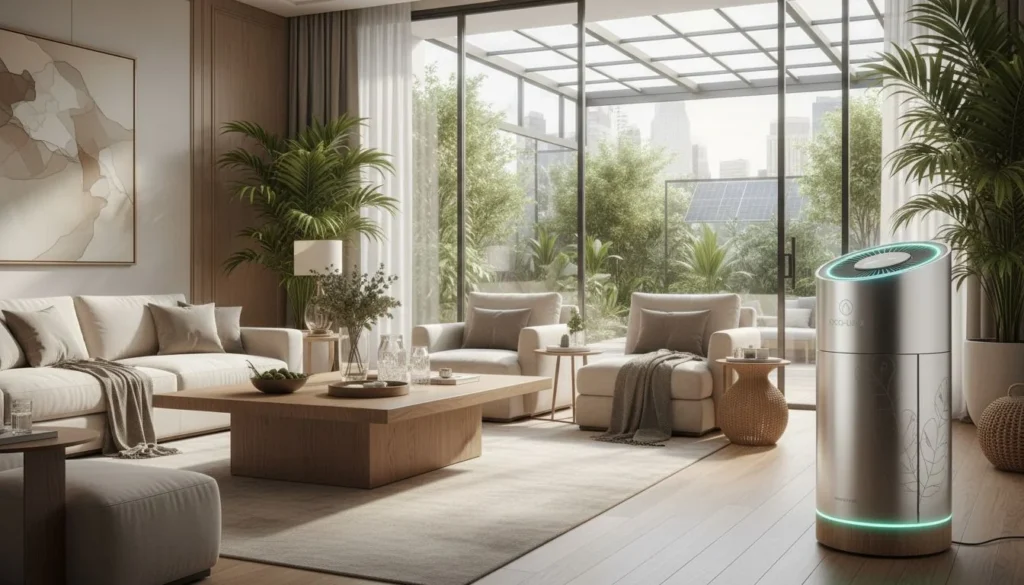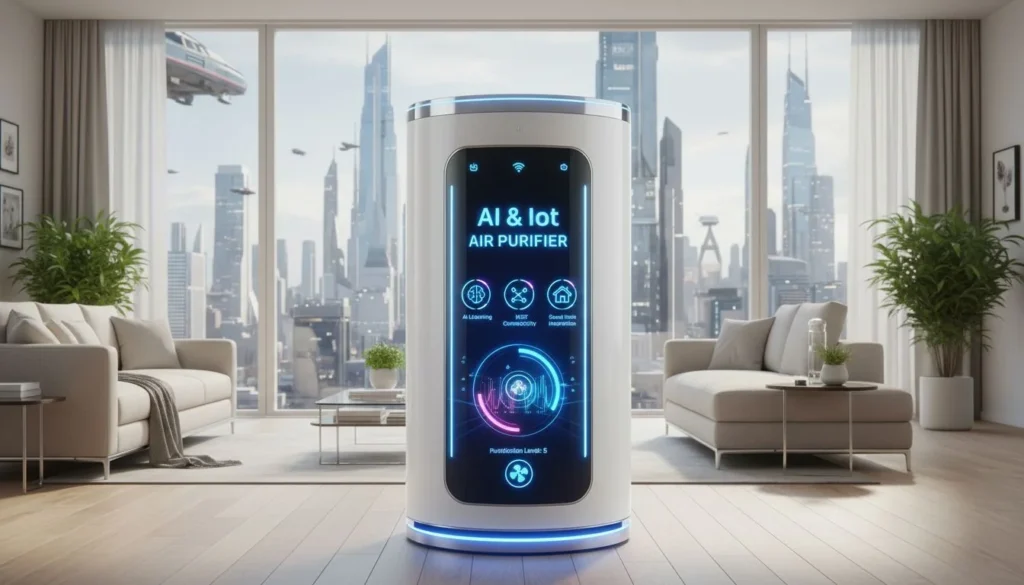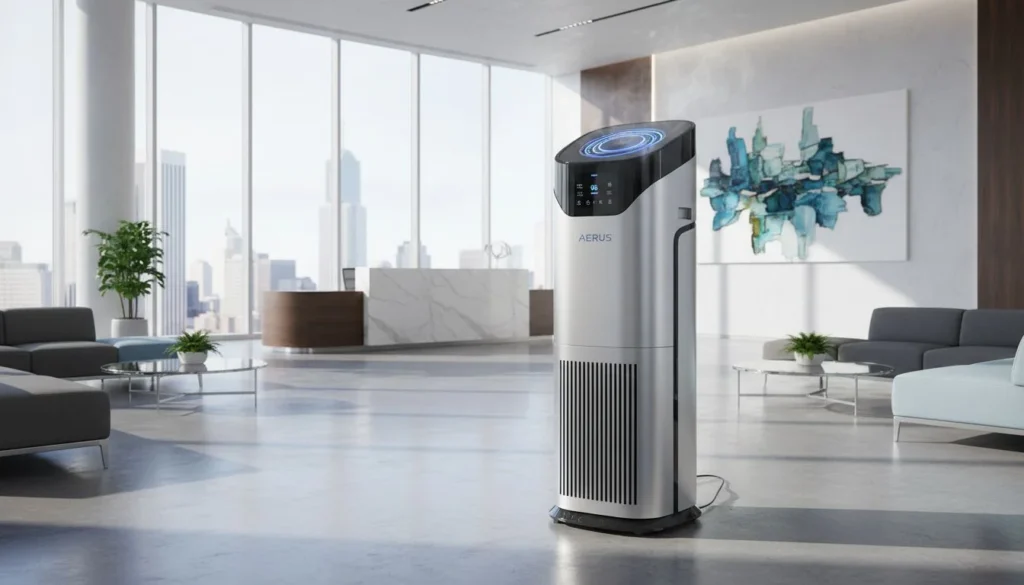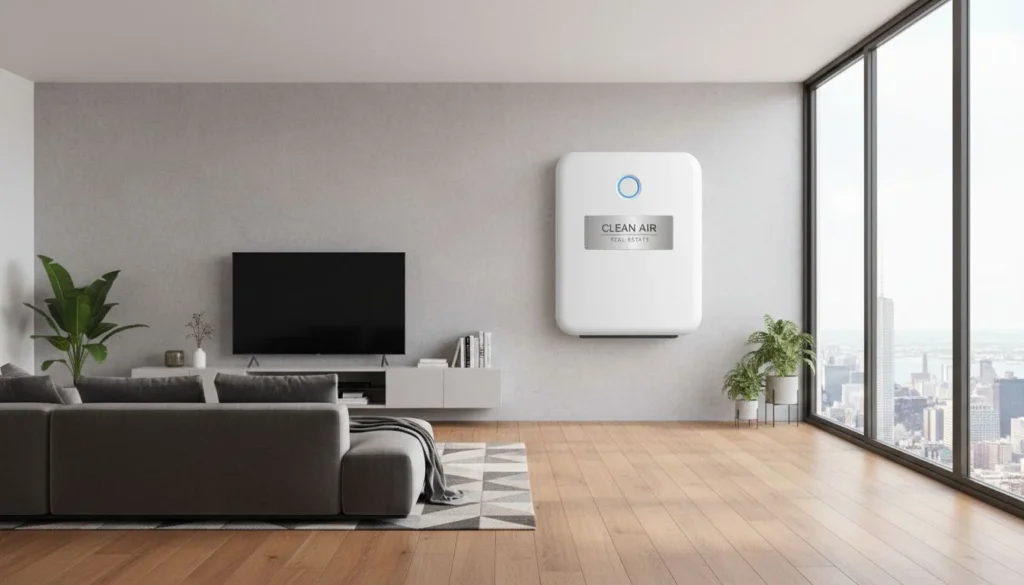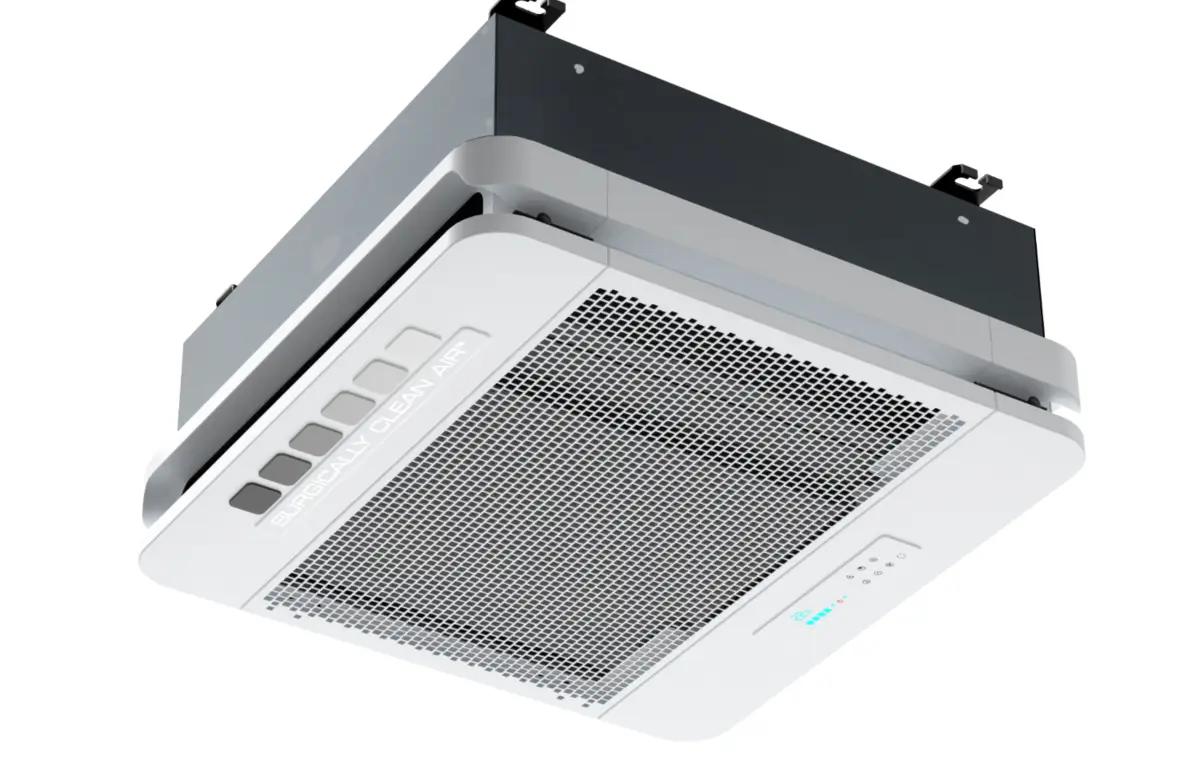
I migliori depuratori d'aria per gli ospedali utilizzano un sistema di HEPA 14 filtri. Questi filtri rimuovono efficacemente batteri e virus. I depuratori necessitano di un elevato tasso di erogazione dell'aria pulita (CADR) per la pulizia di grandi aree. È necessaria l'approvazione della FDA negli Stati Uniti. Il funzionamento silenzioso è importante per mantenere uno spazio tranquillo per i pazienti. Un ambiente tranquillo è importante per la guarigione.
Ricordo che una volta entrai in una stanza d'ospedale. L'aria era pesante, con un forte odore clinico. Allora mi fu chiara l'importanza della qualità dell'aria in questi luoghi. La scelta di un purificatore d'aria non si limita alla selezione di filtri di grado medico o al controllo della qualità dell'aria. CADR valutazioni. L'obiettivo è creare un ambiente in cui i pazienti guariscano bene. Pensate alle opzioni di installazione; le unità montate a parete probabilmente funzionano meglio nei reparti più affollati. Anche i livelli di rumore sono importanti. Immaginate di cercare di riposare o di parlare con un medico mentre una macchina ronza ad alto volume. Le certificazioni, come l'autorizzazione FDA, dimostrano che l'unità soddisfa le severe norme sanitarie. Nell'affrontare queste decisioni, ricordate che non si tratta solo di caratteristiche, ma anche delle persone su cui queste macchine influiscono. Si tratta di vite umane.
I filtri HEPA 14 sono essenziali per i depuratori d'aria ospedalieri.Vero
I filtri HEPA 14 rimuovono efficacemente batteri e virus, fondamentali per gli ospedali.
Tutti i depuratori d'aria ospedalieri devono essere autorizzati dalla FDA.Falso
L'autorizzazione della FDA è richiesta solo negli Stati Uniti, non universalmente per tutti gli ospedali.
Perché un filtro di grado medico è essenziale per i depuratori d'aria ospedalieri?
Immaginate di entrare in un ospedale e di respirare un'aria frizzante come la brezza di montagna. Questa è la meraviglia dei filtri per uso medico.
I filtri di grado medico, come il HEPA 14, svolgono un ruolo fondamentale nei depuratori d'aria ospedalieri. Rimuovono dall'aria batteri, virus e altri contaminanti nocivi. Questo processo crea un ambiente più sicuro. I pazienti e il personale sanitario beneficiano di questa sicurezza. È molto importante.
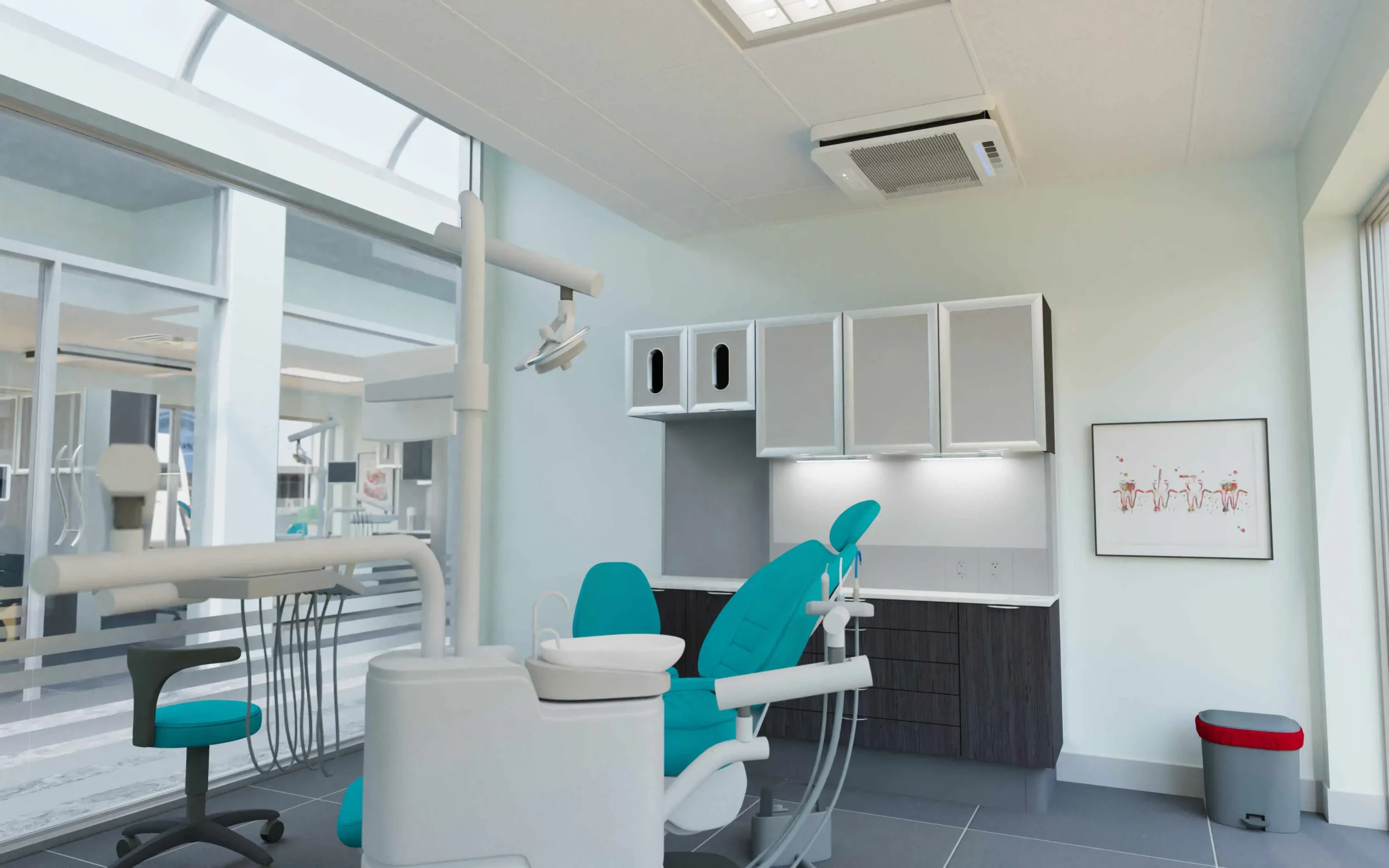
Il ruolo dei filtri di grado medico
Ricordo la prima volta che ho capito quanto sia importante la qualità dell'aria negli ospedali. È successo quando ho visitato un amico in terapia intensiva. L'aria sembrava diversa, più pulita, quasi confortante. È stato allora che ho imparato a conoscere i filtri di grado medico come il HEPA 14. Non si tratta dei soliti gadget: catturano almeno il 99,995% di particelle minuscole, fino a 0,3 micron. Questo livello di filtrazione1 è molto importante perché, negli ospedali, anche il più piccolo contaminante può essere una questione di vita o di morte. Questi filtri servono come protezioni invisibili contro le malattie.
Confronto tra filtri di qualità medica e filtri standard
| Caratteristica | Filtri di grado medico | Filtri standard |
|---|---|---|
| Cattura delle particelle | ≥99,995% di 0,3 micron | ≤99% delle particelle più grandi |
| Contaminanti target | Batteri, virus | Polvere, polline |
| Applicazione | Ospedali | Case, uffici |
La sicurezza del paziente non è negoziabile in ambienti sanitari2. I filtri di grado medico sono necessari quando la sicurezza del paziente è fondamentale. Vi fidereste di un filtro standard con pazienti molto vulnerabili? Per me è chiaro: si dovrebbe usare solo il meglio.
Considerazioni sull'installazione e sulle prestazioni
Parliamo ora della configurazione. L'installazione di questi depuratori non si limita a collocarli in una stanza; gli ospedali sono luoghi affollati con esigenze particolari. Un elevato tasso di erogazione dell'aria pulita (CADR) superiore a 300 CFM è consigliabile per spazi ampi superiori a 1.000 piedi quadrati. Trovare il posto giusto per questi apparecchi può essere difficile; le opzioni di montaggio a parete o a soffitto assicurano un'ostruzione minima e una circolazione dell'aria ottimale.
Il rumore è un problema nascosto che deve essere affrontato per evitare di disturbare i pazienti e il personale. Molti ospedali scelgono depuratori con Cancellazione dei decibel3 per garantire un funzionamento silenzioso, perché la pace e la tranquillità sono molto importanti per la guarigione.
Conformità normativa
Ho scoperto che seguire le regole è fondamentale, soprattutto in ambito sanitario, dove la conformità alle normative, come l'autorizzazione della FDA, è essenziale per i purificatori d'aria utilizzati negli ospedali statunitensi. Questa certificazione assicura che il prodotto soddisfi gli standard di sicurezza necessari per gli ambienti medici. Marchi come Active Pure e Healthway hanno ottenuto questa certificazione, offrendo la necessaria rassicurazione.
In Cina, i depuratori devono essere certificati come macchine per la disinfezione dell'aria, sottolineando l'importanza della conformità alle normative regionali, poiché la salute e la sicurezza non hanno una soluzione unica.
Segnaposto di conclusione
Conoscere la necessità di filtri di grado medico in ambito ospedaliero è fondamentale per mantenere la sicurezza e l'igiene: si tratta di proteggere la salute e le vite umane. Esaminando opzioni come HEPA 14 filtri, gli ospedali possono offrire ambienti più puliti e sicuri per tutti.
I filtri HEPA 14 catturano il 99,995% di particelle da 0,3 micron.Vero
I filtri HEPA 14 sono progettati per catturare almeno il 99,995% delle particelle.
I filtri standard sono adatti agli ambienti ospedalieri.Falso
I filtri standard non sono in grado di fornire la protezione richiesta negli ospedali.
Come funziona CADR Impatto sull'efficienza dei depuratori d'aria ospedalieri?
Spesso si pensa a come gli ospedali possano mantenere l'aria fresca e pulita. I depuratori d'aria con un buon CADR valutazioni aiutano a rimuovere le impurità.
CADR o Clean Air Delivery Rate, misura l'efficacia con cui un purificatore d'aria pulisce l'aria. Gli ospedali hanno bisogno di un'elevata CADR valutazioni. Queste valutazioni dimostrano che le macchine rimuovono rapidamente contaminanti come polvere, polline e fumo. Migliorano davvero la qualità dell'aria. L'aria diventa più pulita. Questo crea un ambiente più sicuro per i pazienti e il personale.
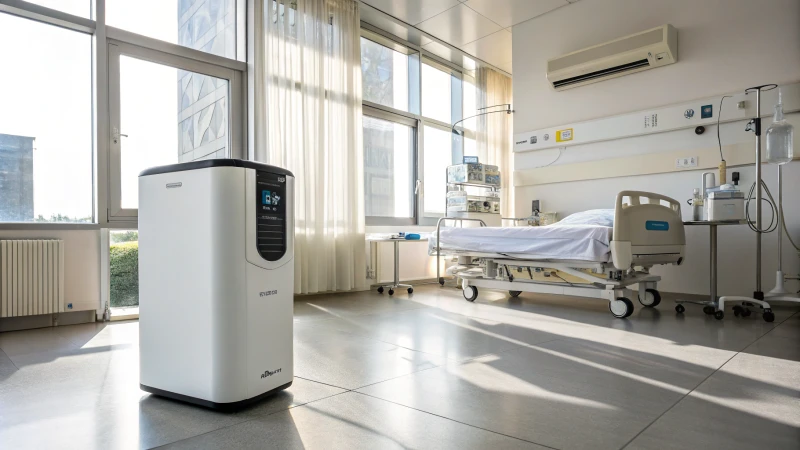
Comprensione CADR in ambiente ospedaliero
Immaginate di entrare in una stanza d'ospedale e di aspettarvi un'aria pulita e fresca. Molte minuscole particelle invisibili fluttuano in giro, pronte per essere respirate da qualcuno di fragile. Il Tasso di erogazione dell'aria pulita (CADR)4 aiuta a misurare la capacità di un purificatore d'aria di pulire l'aria. In luoghi importanti come gli ospedali, la scelta di unità con un elevato grado di pulizia dell'aria CADR diventa essenziale. Numeri superiori a 300 CFM sono ideali per coprire spazi ampi, come un reparto di pronto soccorso affollato.
| Inquinante | Consigliato CADR |
|---|---|
| Polvere | 300+ CFM |
| Polline | 350+ CFM |
| Fumo | 400+ CFM |
Filtrazione di grado medico
Ma non fermatevi a CADR. Esaminando i filtri di grado medico come HEPA 14 questioni. Questi filtri catturano batteri e virus, ospiti indesiderati dell'aria degli ospedali. In pratica intrappolano tutte le particelle nocive prima che entrino nei nostri polmoni. Nei piccoli spazi ospedalieri, purificatori d'aria5 che possono essere montati a parete o a soffitto cambiano tutto.
Considerazioni normative
Capire le regole è come imparare una nuova lingua. Negli Stati Uniti, i dispositivi possono richiedere l'autorizzazione della FDA, che ne conferma l'idoneità per gli ambienti medici. Marchi come Active Pure e Healthway soddisfano queste esigenze per gli ospedali. In Cina, invece, i dispositivi devono essere qualificati come macchine per la disinfezione dell'aria per soddisfare gli standard locali.
Importanza del controllo del rumore
Ora, pensate al rumore: a nessuno piace un vicino rumoroso, soprattutto quando la tranquillità fa parte della cura. Immaginate di cercare di dormire con una macchina rumorosa nelle vicinanze! Tecnologie come la Decibel Cancellation™ aiutano a ridurre in modo significativo il rumore operativo.
Per chiunque sia confuso nella scelta, è possibile consultare gli esperti di aziende come HisoAir6 probabilmente fornisce una consulenza esperta. L'equilibrio tra prestazioni e comfort del paziente non si limita ai numeri, ma riguarda anche la tranquillità.
Un CADR superiore a 300 CFM è ideale per i depuratori d'aria ospedalieri.Vero
Un CADR superiore a 300 CFM copre efficacemente grandi spazi ospedalieri.
L'autorizzazione della FDA è obbligatoria per tutti i depuratori d'aria ospedalieri statunitensi.Falso
Non tutti i depuratori d'aria ospedalieri richiedono l'autorizzazione della FDA, solo alcuni lo fanno.
Quali sono le certificazioni da ricercare nei depuratori d'aria per ospedali?
Immaginate il comfort che si ottiene quando il vostro depuratore d'aria ospedaliero possiede le più alte certificazioni. È davvero importante non solo per un'aria più pulita, ma anche per proteggere le vite umane.
Scegliete depuratori d'aria con certificazioni importanti per gli ospedali. HEPA 14 filtri offrono una filtrazione di livello medico, che è fondamentale. L'autorizzazione della FDA conferma la sicurezza per la salute. I dispositivi devono CADR con valori nominali superiori a 300 CFM. Ciò promette prestazioni ottimali.
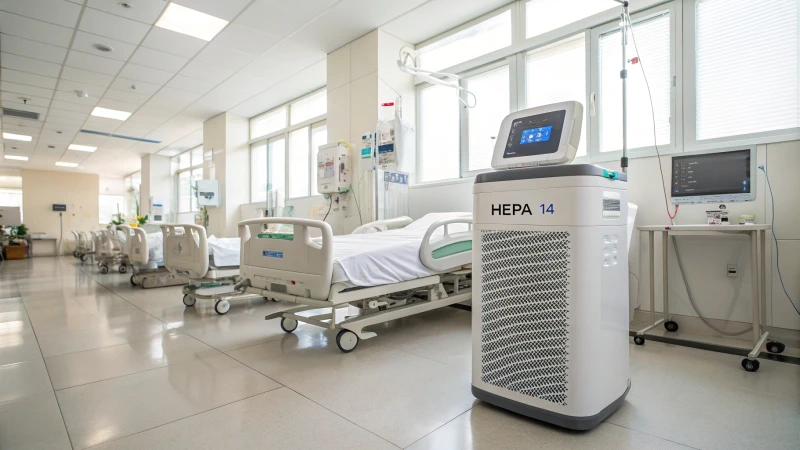
Comprendere le certificazioni chiave
La comprensione dei depuratori d'aria può risultare confusa, soprattutto quando la salute è a rischio. Anch'io mi sono sentito così quando ho iniziato a esplorare questo argomento. Tutto sembrava pieno di parole complesse e molte forme brevi. Una cosa chiara era l'importanza delle certificazioni.
Un elemento essenziale certificazione7 è il HEPA 14, che garantisce un filtraggio di livello medico. Questo tipo di filtro è in grado di rimuovere fino al 99,995% di particelle sospese nell'aria, compresi batteri e virus. Questa efficienza è fondamentale in un ambiente sanitario.
Un'altra certificazione importante è l'approvazione della FDA. Negli Stati Uniti, l'approvazione della FDA indica che un purificatore d'aria soddisfa i rigorosi standard di salute e sicurezza, particolarmente importanti negli ambienti medici.
| Certificazione | Descrizione |
|---|---|
| HEPA 14 | Filtrazione di livello medico in grado di rimuovere il 99,995% di particelle sospese nell'aria. |
| Autorizzazione FDA | Indica la conformità agli standard di sicurezza sanitaria degli Stati Uniti. |
Metriche e standard di prestazione
Le prestazioni sono fondamentali nella scelta di un purificatore d'aria per ospedali o cliniche.
Il tasso di erogazione di aria pulita (CADR8) è un altro parametro fondamentale da considerare. Misura la velocità con cui un purificatore d'aria riesce a purificare l'aria in un'area specifica.
Per gli ospedali, è consigliabile scegliere depuratori con un CADR oltre 300 CFM per coprire in modo efficiente grandi spazi.
| Metrica delle prestazioni | Importanza |
|---|---|
| CADR > 300 CFM | Assicura un'efficiente pulizia dell'aria in grandi aree. |
Installazione e livelli di rumore
La pulizia è importante, ma lo è anche un ambiente tranquillo negli ambienti ospedalieri.
In un ospedale, anche le opzioni di installazione sono importanti. I depuratori montati a parete o a soffitto possono essere più adatti per risparmiare spazio e garantire una migliore circolazione dell'aria.
Marchi come HisoAir offrono configurazioni di questo tipo, ideali per l'uso ospedaliero.
I livelli di rumore non devono mai essere ignorati, poiché gli ospedali richiedono un ambiente tranquillo sia per i pazienti che per il personale. La scelta di un purificatore d'aria con tecnologia avanzata di cancellazione del rumore, come Decibel Cancellation™, può aiutare a mantenere la tranquillità negli ambienti sanitari.
Per ulteriori approfondimenti su tecnologie di controllo del rumore9L'esplorazione di prodotti con caratteristiche uniche, come quelli di HisoAir, potrebbe offrire un ulteriore aiuto.
I filtri HEPA 14 rimuovono il 99,995% di particelle.Vero
I filtri HEPA 14 sono progettati per catturare il 99,995% delle particelle sospese nell'aria.
L'autorizzazione della FDA non è necessaria per i depuratori ospedalieri.Falso
L'autorizzazione della FDA garantisce che i depuratori d'aria soddisfino gli standard di salute e sicurezza negli ospedali.
In che modo i diversi tipi di installazione influiscono sulle prestazioni dei depuratori d'aria ospedalieri?
Vi siete mai chiesti come i diversi metodi di posizionamento dei depuratori d'aria ospedalieri influiscano sulle loro prestazioni?
I diversi tipi di depuratori d'aria per ospedali aiutano il flusso d'aria in vari modi. I depuratori a parete, quelli a soffitto e quelli portatili influenzano il movimento dell'aria. Cambiano la quantità di spazio che coprono. Inoltre, modificano i livelli di rumore. Ogni tipo di purificatore presenta vantaggi e svantaggi particolari. Questi vantaggi e svantaggi si adattano alle esigenze uniche di ogni ospedale. Inoltre, si adattano all'infrastruttura dell'edificio.
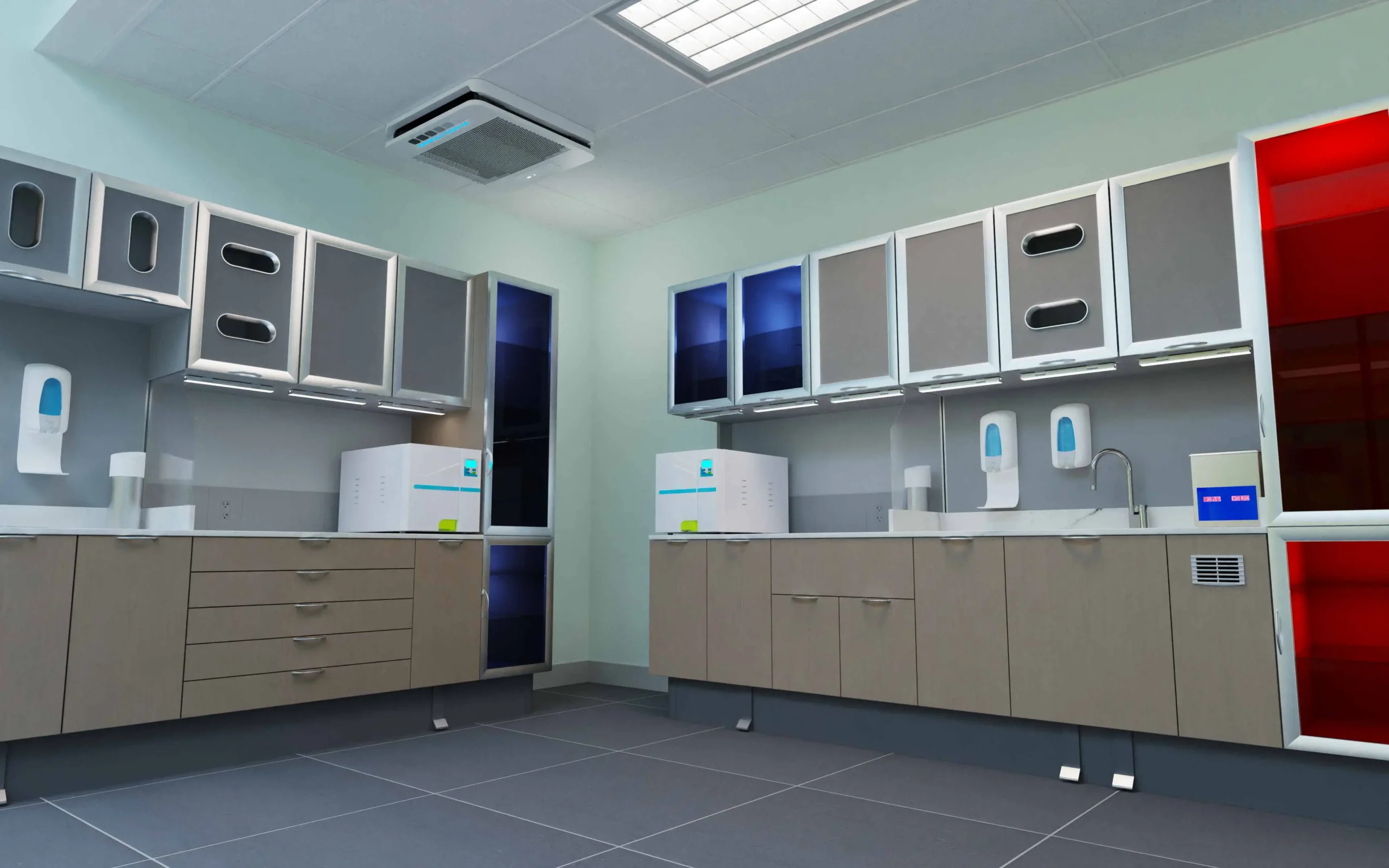
Purificatori d'aria a parete
I purificatori d'aria a parete sembrano la scelta giusta per gli ospedali dove ogni centimetro è importante. Immaginate di camminare in un reparto affollato: lo spazio è davvero importante, no? Questi depuratori consentono di risparmiare spazio sul pavimento e di far circolare liberamente l'aria pulita. Una volta ho visitato un ospedale che li utilizzava e l'ambiente sembrava molto più spazioso. Le unità sono dotate di filtri speciali che catturano anche i germi più piccoli, rendendo l'ospedale più sicuro.
| Vantaggi | Considerazioni |
|---|---|
| Design salvaspazio | Richiede pareti robuste per l'installazione |
| Flusso d'aria senza ostacoli | Può essere necessaria un'installazione professionale |
| Posizionamento sicuro | Mobilità limitata |
Per maggiori informazioni su purificatori d'aria a parete10Per questo motivo, si consiglia di consultare degli esperti che possano guidarvi sui requisiti di installazione.
Purificatori d'aria a soffitto
I depuratori a soffitto sono gli eroi silenziosi nelle grandi stanze d'ospedale. Mi ricordano il funzionamento delle luci di un teatro, che vengono posizionate in modo da coprire ampie aree senza creare ostacoli. Questi depuratori diffondono l'aria in modo omogeneo, particolarmente utili nelle stanze dei pazienti o nelle aree d'attesa più affollate. Molti sono progettati per ridurre il rumore, lavorando in modo silenzioso per non disturbare nessuno. Questo aiuta davvero a mantenere la pace, cosa molto importante negli ospedali.
- Ampia copertura: Le unità a soffitto coprono solitamente una superficie maggiore e garantiscono un flusso d'aria costante nella stanza.
- Funzionamento silenzioso: Molti modelli utilizzano tecnologie silenziose, importanti per un ambiente ospedaliero tranquillo.
Se state pensando di purificatori d'aria a soffitto11, rivolgetevi a specialisti che sappiano se si adattano alla configurazione esistente.
Purificatori d'aria portatili
I depuratori d'aria portatili sono molto pratici: immaginate di dover sistemare rapidamente la qualità dell'aria in diverse sezioni dell'ospedale. Questi purificatori possono essere spostati facilmente, offrendo la purificazione dove è più necessaria. Dal pronto soccorso alle aree di isolamento, si adattano alle mutevoli esigenze ospedaliere. Dimostrano il loro valore in situazioni temporanee o con un numero imprevedibile di pazienti.
- Facile da spostare: Si sposta rapidamente nei punti che necessitano di un'immediata pulizia dell'aria.
- Uso flessibile: Adatto a stanze di diverse dimensioni e utilizzi.
Quando si devono affrontare condizioni temporanee o cambiamenti nel numero dei pazienti, si deve pensare alla Vantaggi dei depuratori portatili12.
Sapere come le diverse installazioni influiscono sulle prestazioni può davvero migliorare la qualità dell'aria negli ospedali. Studiando le esigenze specifiche di ogni spazio, gli amministratori possono scegliere il tipo di depuratore più efficiente per aumentare la sicurezza e il comfort dei pazienti.
I depuratori montati a parete consentono di risparmiare spazio a terra negli ospedali.Vero
Utilizzano superfici verticali, liberando aree critiche del pavimento.
I depuratori a soffitto ostacolano le attività ospedaliere.Falso
Utilizzano lo spazio sopraelevato, consentendo di muoversi senza ostacoli al di sotto.
Conclusione
Gli ospedali necessitano di depuratori d'aria con HEPA 14 filtri, alto CADR e l'autorizzazione della FDA per una qualità dell'aria ottimale, garantendo la sicurezza e il comfort dei pazienti negli ambienti di cura.
-
Scoprite come i filtri HEPA 14 sono progettati per intrappolare le particelle microscopiche che rappresentano un rischio per la salute in ambito medico. ↩
-
Scoprite perché un'efficace purificazione dell'aria è fondamentale per il controllo delle infezioni negli ospedali. ↩
-
Scoprite come la tecnologia Decibel Cancellation™ assicura un funzionamento silenzioso, migliorando il comfort negli ambienti ospedalieri. ↩
-
Esplorate questo link per capire come un CADR elevato influisca sull'efficienza della purificazione dell'aria negli ambienti ospedalieri. ↩
-
Scoprite perché i filtri HEPA 14 sono fondamentali per catturare le particelle nocive negli ambienti sanitari. ↩
-
Scoprite come gli esperti HisoAir possono aiutarvi a selezionare i purificatori d'aria ottimali per l'uso ospedaliero. ↩
-
Scoprite perché i filtri HEPA 14 sono essenziali per la purificazione dell'aria a livello ospedaliero, garantendo la sicurezza grazie alla cattura di batteri e virus. ↩
-
Scoprite come le classificazioni CADR influiscono sulle prestazioni dei purificatori d'aria, fondamentali per mantenere la qualità dell'aria nei grandi spazi ospedalieri. ↩
-
Scoprite come la tecnologia di cancellazione dei decibel riduce il rumore nei depuratori d'aria, migliorando il comfort dei pazienti e l'efficienza del personale. ↩
-
Scoprite perché i depuratori a parete sono efficienti dal punto di vista dello spazio e sicuri per gli ospedali. ↩
-
Scoprite come le installazioni a soffitto migliorano la copertura e riducono il rumore. ↩
-
Scoprite come i depuratori portatili offrono flessibilità e pulizia mirata. ↩


